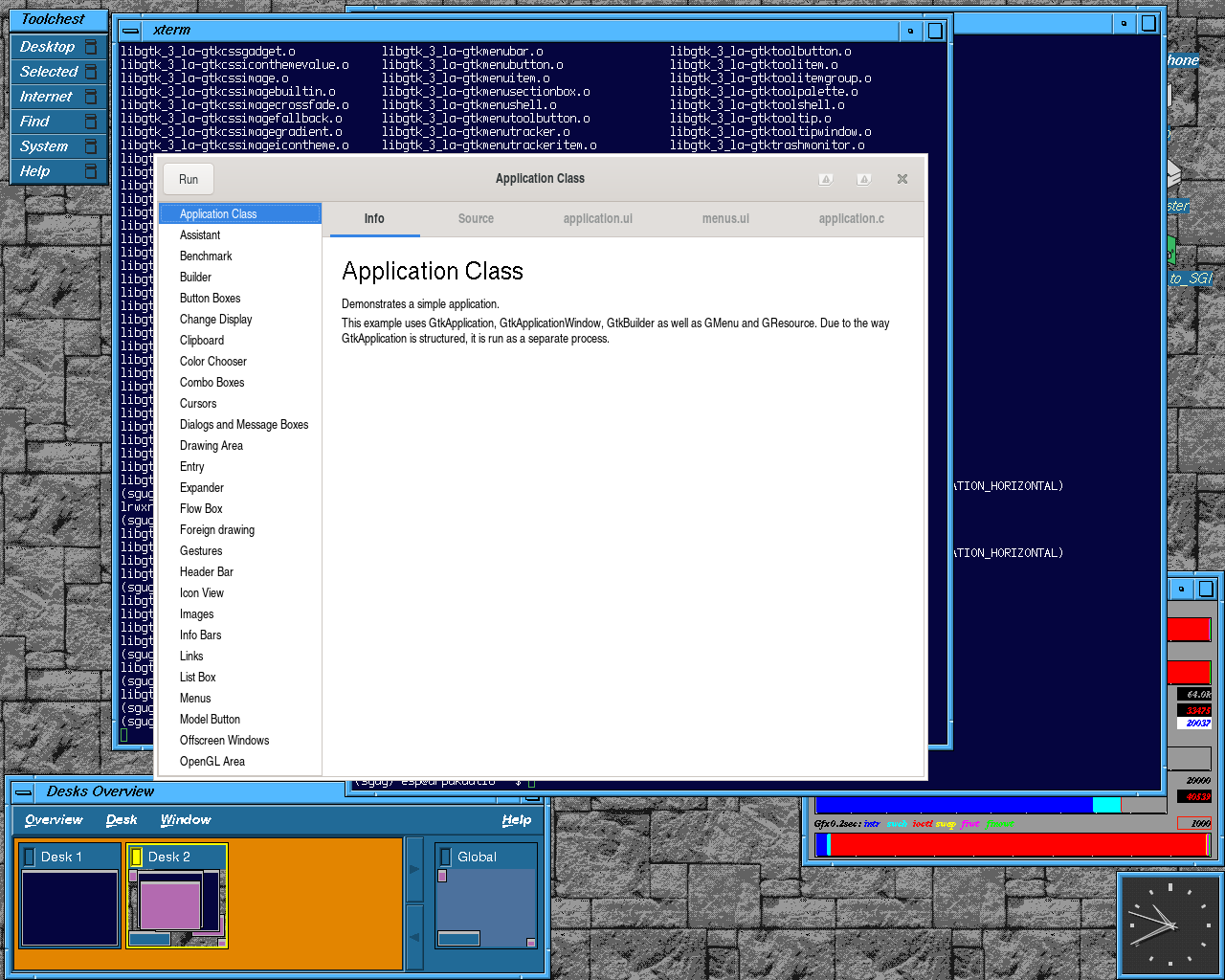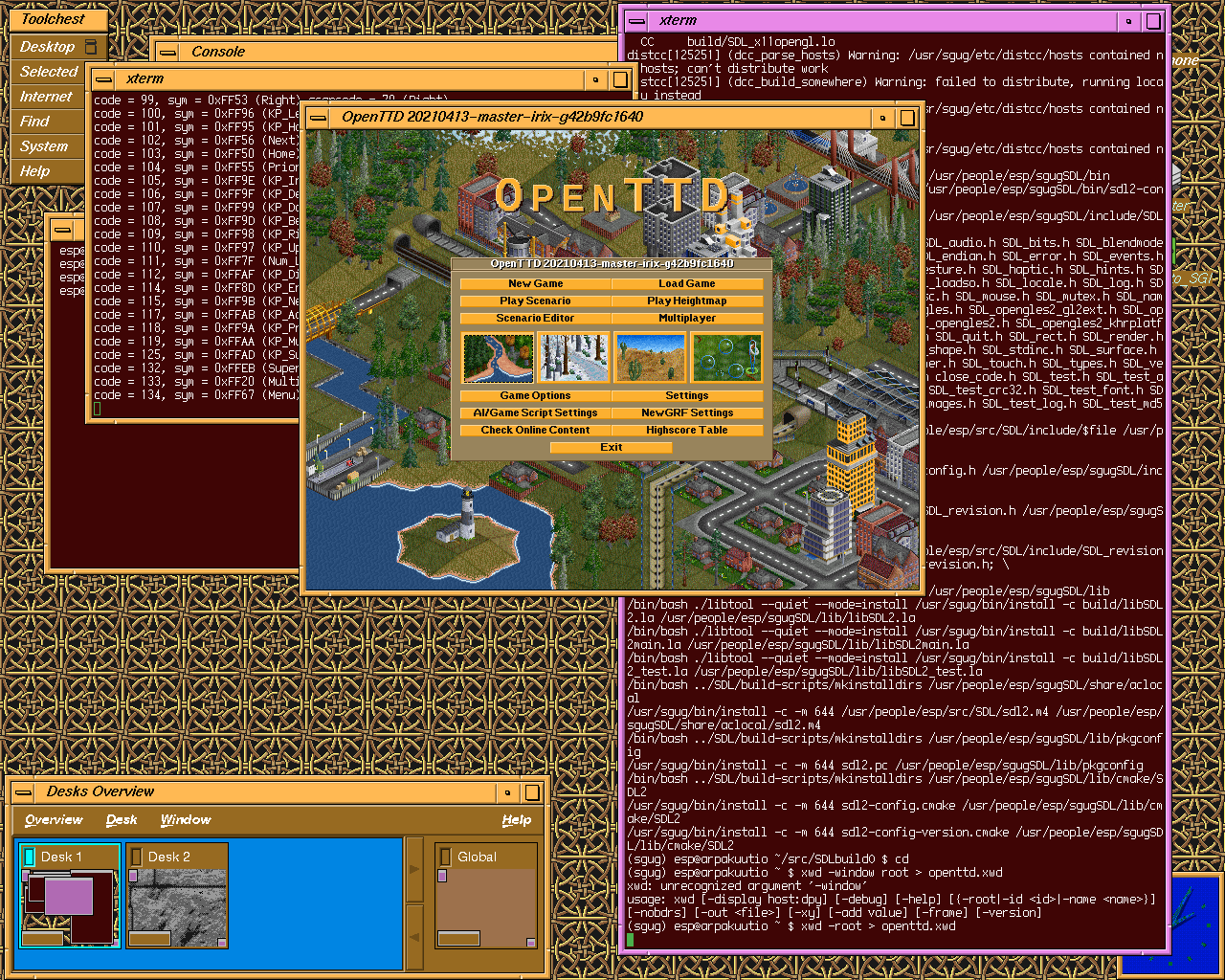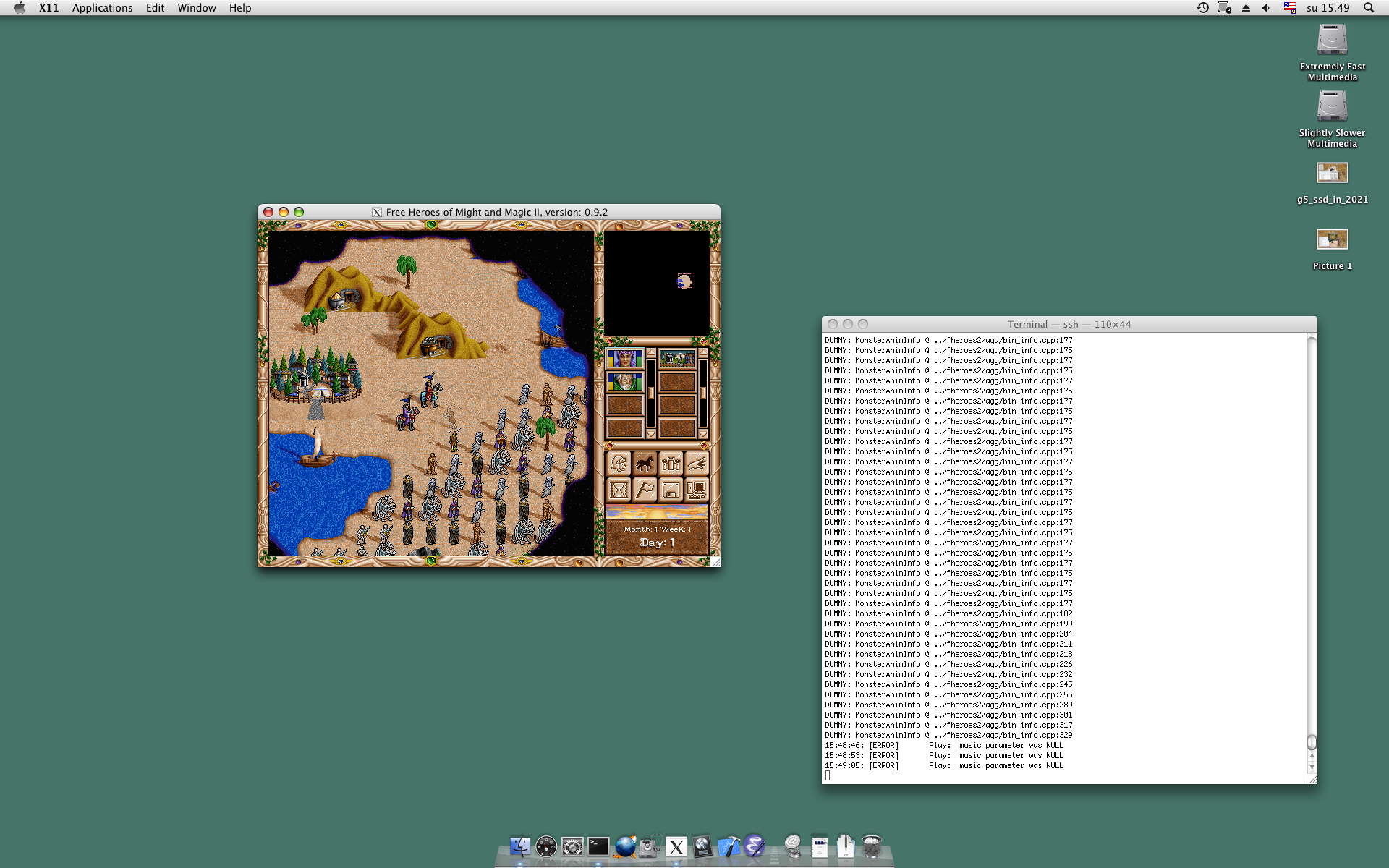@praetor sure! Just msg me on Discord or ask here - there's also a 2.59.0 on
Also, yesterday I ported some stuff that is known to divide opinions. Personally, I just want to get new stuff running so I really don't care about the semi-religious debate. Thus my Octane now has a
Why? Well of course because GTK+3. To get this one going, I had to compile some newer X11 libraries and chose Xorg's latest as my basis. I had some doubts whether things would work nicely against the
Some other GTK+3 dependencies were... interesting.
GTK+3 build consisted mostly of waiting. Also, there's a bug that made it dump core on startup. Apparently IRIX libc
If you're worried about

sgug-rse-wip that you can use. I'll update that to include the volume manager patch and add another one for 2.62.4 sometime this week. Also, yesterday I ported some stuff that is known to divide opinions. Personally, I just want to get new stuff running so I really don't care about the semi-religious debate. Thus my Octane now has a
messagebus user and a start-up script that starts... dbus Why? Well of course because GTK+3. To get this one going, I had to compile some newer X11 libraries and chose Xorg's latest as my basis. I had some doubts whether things would work nicely against the
Xsgi X server on the Octane, but turned out everything works fine. Stuff that's not supported like Xrender falls back as gracefully as it can - the transparency is just not rendered. If someone felt particularly adventurous, it would probably be possible to write a shim that'd implement the Xrender client library API and do the actual drawing with OpenGL.Some other GTK+3 dependencies were... interesting.
libepoxy did not find Python so it decided to try running Python scripts with Bourne shell. Because of that, I thought for a moment that it requires ImageMagick as it tried to run import GTK+3 build consisted mostly of waiting. Also, there's a bug that made it dump core on startup. Apparently IRIX libc
bsearch() can give a null pointer to the comparison function under certain circumstances. For now I just #if 0'd out the cache lookup to get it going. Fixing this is trivial, I'll do it today.If you're worried about
gr_osview CPU display, it's all maxed out because the Octane is linking the library while I run the demo.


